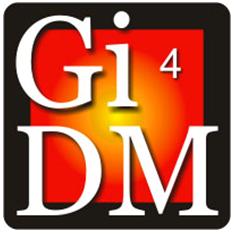Jeremy is a Deputy Commissioner with Fire and Rescue NSW with responsibility for all operational activity and community safety work. Through the 2019-2020 bushfire season Jeremy played a critical role leading the response to this disaster. He is focussed on preparing FRNSW for future operational challenges with an interest in new and innovative technologies, such as artificial intelligence, to help prevent fires from impacting the community, assist fire and rescue operations and improve firefighter safety. Jeremy holds a B. Natural Resources from University of New England and a MBA from Deakin University. He is a Graduate of the Institution of Fire Engineers (IFE), was President of the IFE’s Australia Branch from 2015-2018 and Leader of the Institution’s International General Assembly 2017-2018.
 Jeremy Fewtrell
Jeremy Fewtrell
Deputy Commissioner, Fire and Rescue NSW – Australia
 Susan L. Cutter
Susan L. Cutter
Carolina Distinguished Professor and Director
Hazards and Vulnerability Research Institute
University of South Carolina – USA
Dr. Susan L. Cutter is a Carolina Distinguished Professor of Geography at the University of South Carolina where she directs the Hazards and Vulnerability Research Institute. Her primary research interests are in the area of disaster vulnerability/resilience science—what makes people and the places where they live vulnerable to extreme events and how vulnerability and resilience are measured, monitored, and assessed. She has provided expert testimony to Congress on hazards and vulnerability and was a member of the US Army Corps of Engineers IPET team evaluating the social impacts of the New Orleans and Southeast Louisiana Hurricane Protection System in response to Hurricane Katrina.
 Orhan Altan
Orhan Altan
Istanbul Technical University Department of Geomatics, Istanbul – Turkey
His main working areas are Digital and Architectural Photogrammetry, Spatial Information Systems and Deformation Measurements, Disaster and Risk Management. He is member of the UN expert group of the ad-hoc Committee of the UN Entity, SPIDER (Space-based Information for Disaster Management and Emergence Response) and chair of the JB GIS (Joint Board of Geospatial Information Societies) ad hoc Committee on Risk and Disaster Management. He was the President of the ISPRS between the period 2008-2012, and the First Vice president between 2012-2016.
 Philip Gibbons
Philip Gibbons
Fenner School of Environment and Society, Australian National University – Australia
House losses during wildfires are increasing as we build more homes close to bushland and this is becoming exacerbated by climate change. Prescribed burning is one of the key strategies used in Australia to protect important assets such as houses from unplanned fires. There are two schools of thought about the best way to undertake prescribed burning for this purpose: (1) increase the proportion of the landscape that is burnt; or (2) focus prescribed burning close to the assets that require protection. We examined the efficacy of both strategies by sampling 1456 houses across 13 wildfires in southern Australia. The proportion of houses destroyed during unplanned fire was significantly lower where planned or unplanned burning occurred in the previous 5 years and within 1km upwind from houses. Increasing the per cent of the landscape burnt upwind from houses had a much smaller bearing on house losses. However, other variables, such as weather and tree and shrub cover close to houses had a greater bearing on house losses. I discuss the most effective ways that house losses can be reduced during wildfires that burn in extreme weather.

 Jeremy Fewtrell
Jeremy Fewtrell Susan L. Cutter
Susan L. Cutter  Orhan Altan
Orhan Altan  Philip Gibbons
Philip Gibbons

